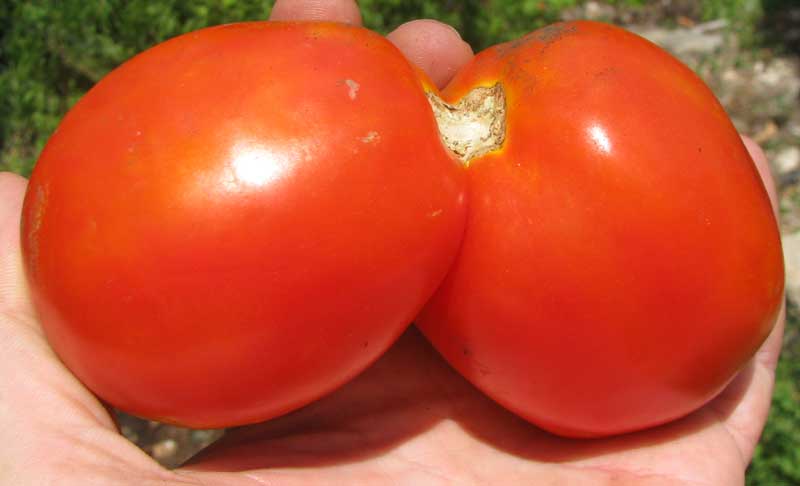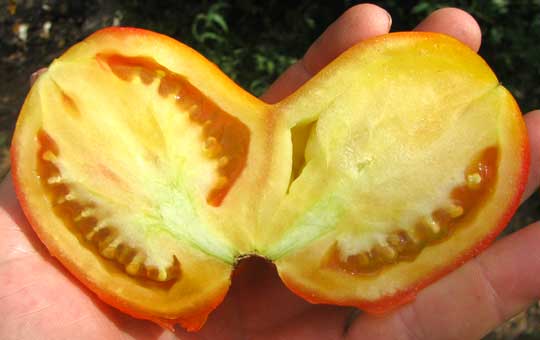Excerpts from Jim Conrad's
Naturalist Newsletter
from the April 10, 2011 Newsletter issued from Hacienda Chichen Resort beside Chichén Itzá Ruins, central Yucatán, MÉXICO; limestone bedrock, elevation ~39m (~128ft), ~N20.676°, ~W88.569°
SIAMESE-TWIN TOMATO

At the frutería in Pisté as I was picking this week's tomatoes from a big tray I did a double-take when I came across the unusual item shown above. I've seen lots of twined squashes but this was my first Siamese-twin tomato. You can see a cross section below:

On the Internet I see that others have encountered the same curiosity, and the phenomenon, which occurs in a wide variety of plants, is known as "fasciation," or "cresting." The technical explanation is that it occurs when the growing tip of something -- the "apical meristem" -- spreads perpendicularly to the direction of its normal growth, producing flattened, ribbon-like, or elaborately contorted tissue. It can occur in stems, roots, fruits or flower heads, and among its causes are random mutations in growing cells, bacterial, viral and fungal infections, mite and insect attacks, frost, and chemical and mechanical damage. Fasciation is rare overall, but has been observed in at least a hundred different plant species.
You may be familiar with various forms of Cockscomb plants producing solid, broad, convoluted flower heads. Those heads are said to be "fasciated."